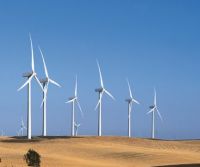Coal has a long history of use but wind farms are becoming a common sight in almost every corner of the world. Here are the reasons why wind farms are better than coal power plants.
1. Zero Emissions vs. Heavy Pollution
- Wind power produces no air pollution or greenhouse gases during operation.
- Coal releases CO₂, sulfur dioxide, nitrogen oxides, particulate matter, and mercury, all of which contribute to climate change, acid rain, smog, and respiratory illnesses.
2. Renewable vs. Finite Resource
- Wind is renewable, meaning it won’t run out as long as the atmosphere exists.
- Coal is finite and becomes harder and more expensive to extract over time.
3. Health Impacts
- Pollution from coal plants is linked to asthma, heart disease, lung cancer, and thousands of premature deaths yearly.
- Wind turbines generate electricity without toxic byproducts.
4. Lower Operating Costs
- Once built, wind turbines have minimal fuel costs (wind is free) and relatively low maintenance.
- Coal plants require constant fuel mining, transport, and combustion, which is expensive.
5. Cheaper Electricity (in many regions)
- Over the last decade, wind has become one of the cheapest sources of new electricity due to technological advances and favorable incentives.
- Coal often cannot compete on price without subsidies.
6. Faster to Build
- Wind farms can be built in 6–12 months, especially modular onshore farms.
- Coal plants take years to permit, finance, and construct.
7. Reduced Water Use
- Wind turbines require almost no water.
- Coal plants use huge amounts of water for cooling and processing, stressing local water supplies.
8. Less Land Damage
- Wind farms allow the underlying land to be used for agriculture, grazing, or conservation.
- Coal mining—particularly strip mining and mountaintop removal—causes ecosystem destruction and soil and water contamination.
